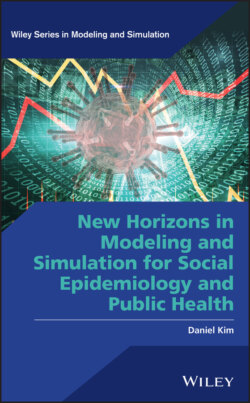Читать книгу New Horizons in Modeling and Simulation for Social Epidemiology and Public Health - Daniel Kim - Страница 28
2.4 Why ABM and MSM are Useful for Studying the Social Determinants of Health
ОглавлениеIn both of the fields of social epidemiology and social policy, understanding the nature of these relationships (such as the effect of a particular social determinant on health) using traditional models is greatly limited by the lack of consideration of the complexity of systems. In order to delineate the true effects of the social determinants of health within the complex systems of entire societies—characterized by multiple agents, nonlinearities, and complex feedback loops—novel modeling and simulation tools such as ABM and MSM are often required. For example, simulation studies can model the intergenerational transmission of socioeconomic disadvantage, an inquiry that is impractical in more traditional studies. Importantly, systems science approaches such as ABM and MSM can enable exploration of the possible impacts of policy options before actually implementing them (Maglio and Mabry 2011), which can avoid the ethical and feasibility issues that can arise from implementing interventions in real life. For example, in the review of the evidence‐based interventions for the social determinants of health by Bambra et al. (2010) described in the last chapter, no intervention studies on income inequality were found. Through MSM, we can readily simulate the potential health effects of a tax policy that modifies the income distribution within a population.
The systems science approaches emerging in social epidemiology and public health research today are hardly new. Their historical use dates back to several decades within other disciplines, including physics, economics, engineering, and systems biology (Mabry et al. 2010). For example, systems science approaches such as ABM and MSM have been previously used to address wide‐ranging topics such as overfishing, the decline of ancient civilizations, climate change, and terrorism networks (Mabry et al. 2010). Their recent adoption into the public health arena can be attributed to a growing recognition of their utility for addressing intractable public health problems such as the spreading obesity epidemic (Hammond 2009) and the complexity of tobacco control policies (Tengs et al. 2001; Levy et al. 2002). Other recent applications of ABM to population health include analyzing the spread of infectious disease epidemics such as pandemic flu (Longini et al. 2005); modeling the social determinants of behaviors such as alcohol and drug use (Hoffer et al. 2009); and simulating dynamics of chronic diseases such as diabetes at a population level (Jones et al. 2006).
As should become evident throughout the remainder of this book, the possible applications of ABM and MSM to the social and economic determinants of population health are vast. These potential applications range from studying the spread of infectious diseases (e.g. COVID‐19) or spread of intractable problems such as the obesity epidemic, to modeling the social determinants of behaviors such as alcohol or drug use, to simulating the public health impacts of enacting new tax policies. These techniques have been largely developed and applied in other fields including computer science, political science, economics, and social policy. Diffusion and adoption of these approaches into the fields of social epidemiology and public health are more recent, and there remains a tremendous potential for transforming the landscape of these fields by integrating these novel applications.
